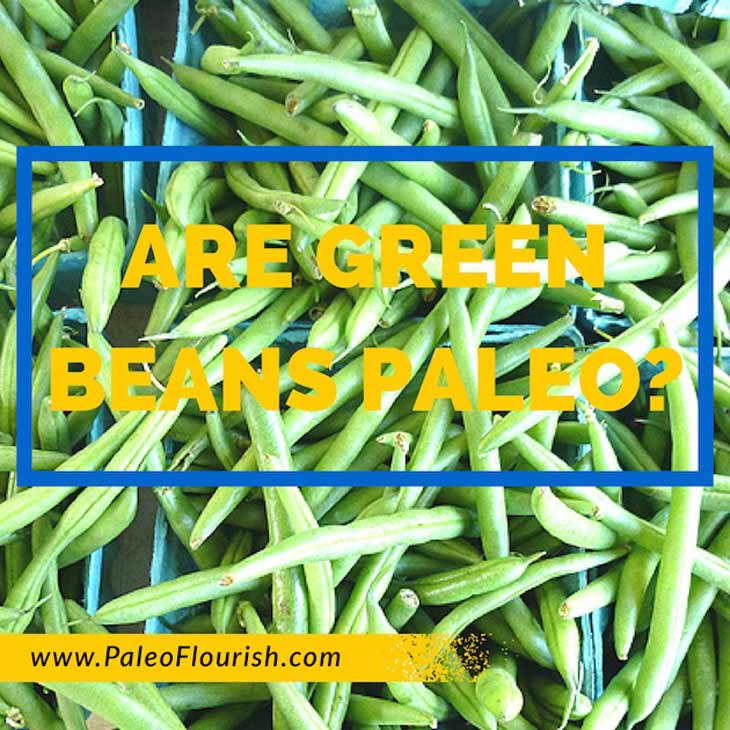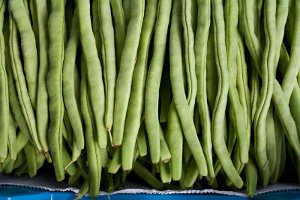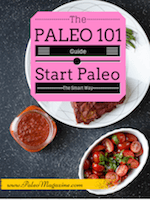Are Green Beans Paleo?

I was a really good kid. No kidding. I slept anytime and anywhere as a baby, I was a star student, and I never really got into much trouble.
But yeah – in some ways, I was also a nightmare. For instance, trying to get me to eat vegetables or do pretty much anything that I didn’t like was almost impossible. Or at least very painful for whoever was trying (usually my mom).
Oddly, though, I liked green beans. I honestly can’t remember another vegetable that I liked.
Fast-forward – I’m Paleo now and eat a much wider variety of veggies and other foods than I did when I was a kid. (As an aside, it’s now me who tries to get my mom to eat vegetables. Oh the irony…)
In any event, today’s post is dedicated to that one vegetable that I actually did like as a kid…
Are Green Beans Paleo?
I could beat around the proverbial bush, but why do that?
Absolutely. Green Beans are 100% Paleo.
You might have read our article on Why Legumes Are NOT Paleo and thought that green beans also aren’t Paleo, but as I’ll explain in more detail below, green beans (unlike other legumes) have very few proteins that will harm your digestive tract, are lower in phytates so that nutrients are more available to your body, and are less likely to disrupt your gut bacteria.
First, here is a quick video explaining this:
But Aren’t They a Legume?
Technically, green beans are a member of the legume family, which I suggest that you generally avoid as part of a healthy Paleo diet.
And technically, green beans haven’t been eaten all that long by humans, since they are mostly the result of selective breeding by humans.
But none of that matters. Here’s why:
Green Beans are Super-Healthy
- Legumes are the least bad of non-Paleo foods. This isn’t really a reason to eat green beans, but I just want to point out that we’re starting from a relatively good and healthy position. Most beans aren’t ideal, but they’re not terrible either (processed sugars, seed oils, and grains are all far worse).
- Green Beans are high in nutrients. Across the board, green beans are high in a lot of vitamins and minerals. From vitamin C to K to Folate to Manganese, green beans are quite nutritious.
- Green Beans have Almost No Phytates. Most beans are high in phytates, which means that the vitamins and minerals in those aren’t readily absorbed by humans.
 This is not the case for green beans. Phytate levels in green beans are very low, so you can absorb almost all of the vitamins and minerals in green beans. And as Mark Sisson has noted, when you cook green beans, the phytate levels drop dramatically. +1 for green beans. (In fact, you don’t really need to concern yourself too much with phytates – they won’t harm you or drain your body of nutrients already in your body.)
This is not the case for green beans. Phytate levels in green beans are very low, so you can absorb almost all of the vitamins and minerals in green beans. And as Mark Sisson has noted, when you cook green beans, the phytate levels drop dramatically. +1 for green beans. (In fact, you don’t really need to concern yourself too much with phytates – they won’t harm you or drain your body of nutrients already in your body.) - Green Beans are low in Lectins and Prolamins. Lectins and Prolamins are two classes of proteins that can potentially cause or exacerbate a variety of digestive and gut issues. I’ve written before that lectins are something you don’t generally need to be concerned about, but they should be given some consideration. Lectins and Prolamins are normally found in foods/plants such as grains and legumes. Luckily, green beans are low in both and will therefore cause you less digestive distress. In addition, the lectins found in green beans are pretty non-toxic and break down well when heated.
- Green Beans have few Galactans. If you experience digestive problems (gas, bloating, etc.) when you eat a lot of foods, then you may have an issue with FODMAPs (a completely separate post). Galactans are one form of FODMAP that are usually found in beans and legumes, which means that those are foods you should avoid if you have digestive issues. Green beans, however, have almost no Galactans, and are generally safe to eat, even if you can’t eat FODMAPs.
As true as everything I’ve written above is, there’s one more important point. A few people do experience digestive issues when eating green beans.
This is not the case for most people, but if you don’t feel good when you eat green beans, then definitely don’t eat them! Nothing makes more of a difference than how you feel.
Are Peas Paleo?
For many of the same reasons, peas are also Paleo – check out this article for more on that.
100% Delicious
I can eat green beans pretty much however they’re cooked. Maybe it’s a bit of reminiscence for my childhood.
If you want a really delicious recipe, though, head over to NomNomPaleo’s roasted green bean recipe and give it a try. It’s quick, easy, and super-delicious.
Here some other Paleo recipes with green beans as an ingredient:
1. Roasted Green Beans With Kalamata Olive Vinaigrette
2. String Beans With Currant Balsamic Dressing
5. Green Beans And Apple Saute
7. Green Beans with Bacon and Mushrooms
9. Green Bean Stuffing Casserole (contains dairy)
10. Crockpot Chicken Yellow Curry
What about you?
What are your favorite green bean recipes? Do you experience digestive issues with green beans? Let me know in the comments below!
Images from sxc.hu and flickr.com

